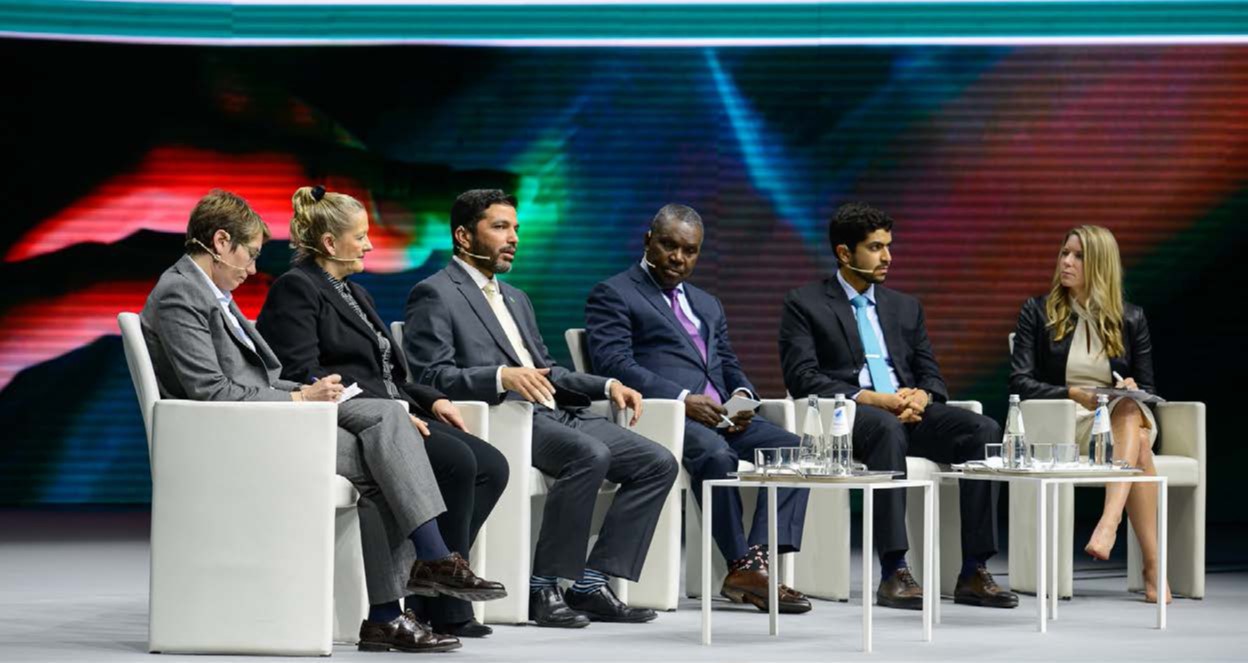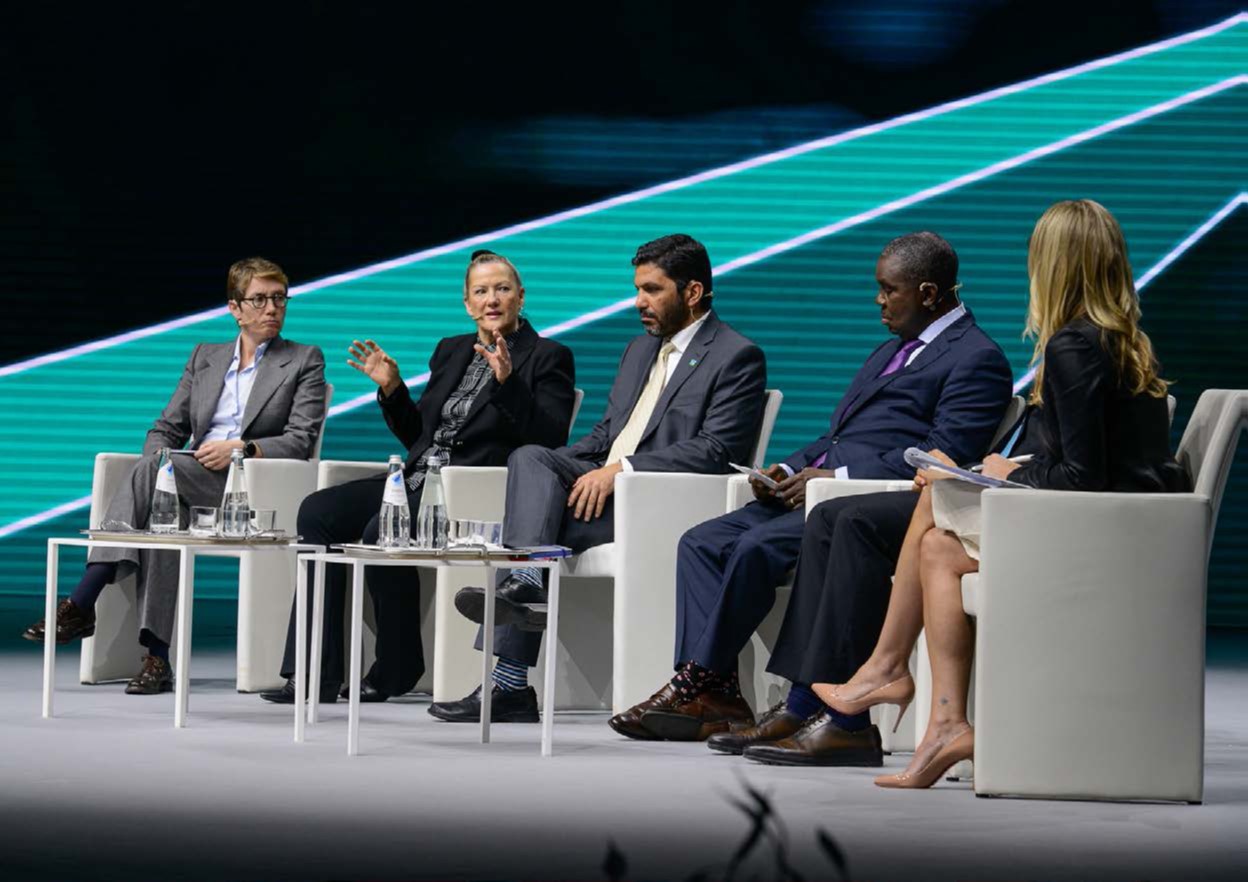-
Featured Solutions
-
Energy Transition
Energy technology to help the industry advance on the path to net-zero
-
Hydrogen Technologies
Advanced technologies to accelerate hydrogen deployment
-
Geothermal Solutions
Experience and expertise to redefine possibilities in geothermal
-
Carbon Capture, Utilization, and Storage (CCUS)
Integrated suite of solutions to capture, process, store, and monitor CO2 emissions
-
Emissions Abatement
Solutions to monitor and reduce emissions from industrial operations
-
Remote Operations
Digital operations, monitoring and testing capabilities to serve critical industries
-
AI by BakerHughesC3.ai
Enterprise-scale artificial intelligence for energy operations
-
Liquefied Natural Gas
Industry leading solutions for long-term reliability, availability, and project success
-
Industrial Technology
Solutions to improve efficiency and uptime in processing and manufacturing industries
-
Cordant™
Flexible and connected digital solutions for industrial machines, equipment, and systems
-
Mature Assets Solutions
Reviving mature Assets and accelerating impact through integrated solutions
-
Flare Reduction
Creating new opportunities for value recovery and efficiency in flare reduction.
-
-
Energy Transition
Energy technology to help the industry advance on the path to net-zero
-
Products & Services
-
Oilfield
-
On-Demand Solutions
-
Onshore Composite Pipe
-
Evaluation
-
GaffneyCline Energy Advisory
GaffneyCline Energy AdvisoryFrom high-level strategy to ground-level execution, trust a proven team of energy advisors to help deliver your projects with greater speed, certainty, and efficiency.
- Process & Pipeline Services
-
Drilling
-
Completions
-
Maximizing Return on Efficiency
-
Completion Fluids
-
Intelligent Completion Systems & Flow Assurance
-
Gas Lift Systems
-
Isolation Valves
-
Liner Hanger Systems
-
Multilateral Systems
-
Multistage Completions
-
Packers
-
Perforating
-
Sand Control
-
Stimulation & Fracturing
-
Subsurface Flow Control
-
Subsurface Safety Systems
-
Tubular Services
-
Well Monitoring and Analytics
-
Maximizing Return on Efficiency
-
Production
-
Integrated Well Services
Integrated Well ServicesOptimize your well operations with proven, comprehensive project management service and support
-
Processing
-
Subsea
-
Well Intervention
InterventionReduce the time and cost of interventions, from well construction to abandonment.
-
Surface Pressure Control
Surface Pressure ControlMaximize drilling efficiency with safe, sustainable, cost-effective well control
-
Decommissioning
-
Digital
-
On-Demand Solutions
-
Turbomachinery & Process Solutions
-
Gas Turbines
Gas TurbinesIndustry-leading gas turbine technologies for mechanical drive and power generation (50/60 Hz)
-
Steam Turbines
Steam TurbinesProven modular designs with the flexibility to meet operating challenges across the oil and gas, and power generation industries.
-
Centrifugal & Axial Compressors
-
Reciprocating Compressors
-
Generators, Synchronous Condensers and Motors
Generators, Synchronous Condensers and MotorsElectro-mechanical solutions that are engineered to perform, built to last, with full life-cycle support.
-
Gearboxes & Gear Couplings
Gearboxes & Gear CouplingsHigh-performance gearing and gear coupling solutions and services to solve the most complex power transmission challenges
-
Expanders & Air Cooled Heat Exchangers
Expanders & Air Cooled Heat ExchangersProviding ultra-high energy efficiency for cryogenic and waste-to-value applications.
-
Remote & Digital Solutions
Remote & Digital SolutionsSmart solutions to help industry operate safely, securely, and efficiently while reducing costs.
-
Turbomachinery Services
Turbomachinery ServicesComprehensive capabilities ensuring the highest availability, reliability, and efficiency for the entire life of your equipment.
-
Centrifugal Pumps
Centrifugal PumpsA proven range of single and multistage, horizontally and radially split designs for long-term reliability in harsh conditions.
-
Valves
-
Talent Development
Talent DevelopmentExtensive and training solutions to develop talent and improve expertise to reduce risks and increase productivity.
-
Gas Turbines
-
Software & Analytics
-
Cordant
-
BakerHughesC3.ai
BakerHughesC3.aiEnterprise-scale AI to make energy operations safer, cleaner and more efficient
-
NDT Software
-
Oilfield Services Digital
-
Cordant
-
Measurement, Testing & Controls
-
Cyber Security Services
-
Downhole Sensors
-
Flame Detectors
-
Flare Management
Flare ManagementUltrasonic flow meters and emissions management solutions for superior flare gas flow measurement and control
-
Flow Meters
-
Industrial Asset Inspection
-
Industrial Radiography and CT
-
Machinery Asset Health & Consulting Services
-
Machinery Diagnostic Services
-
Monitoring Systems
Monitoring SystemsBently Nevada offers condition monitoring systems for plantwide machine monitoring protection.
-
Non-Destructive Testing
-
Nuclear Measurement Solutions
-
Pressure Sensors
-
Process Analyzers
-
Remote Monitoring & Diagnostics
-
Remote Visual Inspection (RVI)
-
Robotic Inspection
-
Roller Bearing Condition Monitoring
-
Sensors
SensorsOur customers rely on the quality and integrity of our vibration sensors to monitor and measure their machinery’s performance.
-
Supporting Services Agreements
-
System 1 Condition Monitoring Software
System 1 Condition Monitoring SoftwareAn all-in-one answer to even your most difficult machine asset management and health monitoring challenges.
-
System Design Installation
-
Test and Calibration Instruments
-
Ultrasonic Testing
-
Cyber Security Services
-
Brands
-
Bently Nevada
-
Bently Training
-
Cyber Security Services
-
Machinery Asset Health & Consulting Services
-
Machinery Diagnostics Services
-
Monitoring Systems
-
Remote Monitoring & Diagnostics
-
Roller Bearing Condition Monitoring
-
Sensors
-
Supporting Services Agreements
-
System 1 Condition Monitoring Software
-
System Design Installation
-
Bently Training
-
Druck
-
Panametrics
-
Reuter-Stokes
-
Waygate Technologies
-
Bently Nevada
-
Oilfield
-
Company
- Baker Hughes
-
Sustainability
-
Sustainability at Baker Hughes
-
People
-
Planet
PlanetWe are committed to operating with sound environmental practices to protect the planet.
-
Principles
PrinciplesOur culture promotes and encourages employees to act with integrity, responsibility, and compliance every day.
-
Reports & Policies
-
Sustainability Strategy
-
Sustainability at Baker Hughes
- News & Knowledge
-
Resources
-
Resources Center
-
Supplier Resources
-
Channel Partner Resources
-
Customer Resources
-
Additional Resources
Additional ResourcesMore information related to Baker Hughes.
-
Resources Center
Panel moderated by Leslie Beyer, President, PESA
Technology is in the fabric of our industry, but it’s actually how we use the technology to empower our people that’s really going to get us there.
Leslie Beyer, President, PESA

What can we do to attract a younger workforce with the unique skills needed to position oil and gas as part of a solution to the climate challenge?
Ms. Benfield stressed the importance of having an authentic message and demonstrating that you’re going to be part of the solution. Ms. Pasini said that investment is needed to inspire younger people in secondary schools, and that companies must remove boxes, let people express themselves, and be fast in responding to them. Mr. Avuru talked of Seplat’s elaborate recruitment process targeting the brightest young men and women fresh out of college, and putting them through an 18-month training collaboration with its technology partners and service providers. Mr. Al Aryani emphasized that the credible and serious companies in the area of sustainability are the ones that will resonate most with the values of prospective students because that is important to the workforce of the future.
How do partnerships with service and technology providers facilitate talent flow? What do those partnerships unlock for you?
Beyond the technology dimension, Mr. Al Aryani said there can be an amalgamation of cultures, training programs, training philosophies, and people-development philosophies.
He said ADNOC leverages partnerships to introduce a people development dimension, because partnerships can catalyze or accelerate the realization of the company’s strategy to further unlock value.
Does a focus on mental health and well-being resonate, and how do you use that to attract a millennial workforce that is very focused on those issues?
At BP, flexible working is a key strategy. Ms. Benfield said they have tried 5,000 people in agile working methods, which it has found removes the typical hierarchal structure and barriers and, produces a healthier team environment that’s more empowering for the individuals involved.
About “the future of work,” what have we accomplished? What are some pitfalls? What still needs to be done on a macro level?
Mr. Al-Balawi commented that there has been a shift from vertical to horizontal skills, which often outpaces an organization’s ability to adapt. So Saudi Aramco is taking steps to predict future needs and proactivity nurture horizontal skillsets. As an example, the company recently sent an HR employee to get a master’s degree in data analytics and advanced computing. She now focuses on deep learning with robotics to predict attrition and address future skills requirements.


